Top Solutions for Roof Storm Damage Repair
Roof damage from storm can cause significant issues to your property. It’s important to check your roof for issues right after a storm to avoid bigger problems later. This article will guide you through spotting roof storm damage and taking steps for repair.
Key Takeaways
-
Understanding the types of storm damage like wind, hail, heavy rainfall, ice, and debris is crucial for effective roof repair and maintenance.
-
Immediate steps after a storm include ensuring personal safety, conducting an initial roof inspection, and performing temporary repairs to prevent further damage.
-
Engaging a professional roofing contractor and collaborating with your insurance company are essential steps for thorough inspection, efficient repairs, and an effective claims process.
Understanding Roof Storm Damage
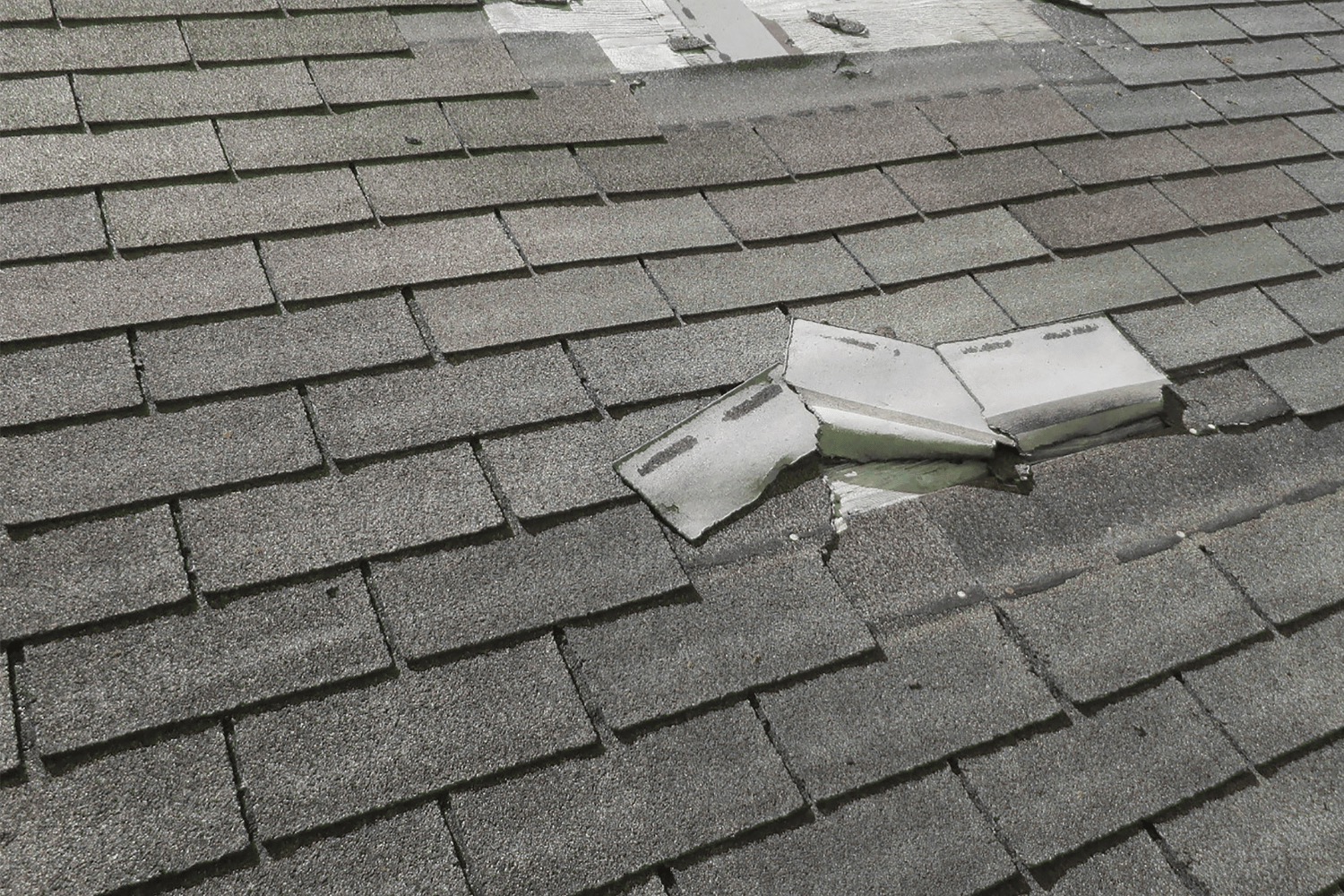
Severe storms can wreak havoc on your roof, causing a variety of damage that can compromise its integrity and functionality. Gaining a clear understanding of the different types of storm damage is key for effective repairs and prevention. Some common types of storm damage include:
-
High winds tearing off shingles
-
Hail leaving pockmarks and dents
-
Fallen trees or branches damaging the roof
-
Water leaks and moisture damage
-
Ice dams causing water backup
Identifying and managing storm damage roof issues caused by severe weather conditions is crucial. Aging roofing materials are particularly vulnerable to high winds and heavy precipitation, necessitating temporary protection and professional repair.
By identifying the specific type of damage, you can take the necessary steps to repair and prevent further issues with your roof.
Wind, hail, heavy rains, ice, and debris can all lead to significant roof damage. Each type of storm can affect roofs differently, depending on the roofing materials used and the storm’s intensity. With knowledge of these impacts, homeowners are better equipped to take proactive steps to mitigate damage and maintain their roof’s health.
Wind Damage
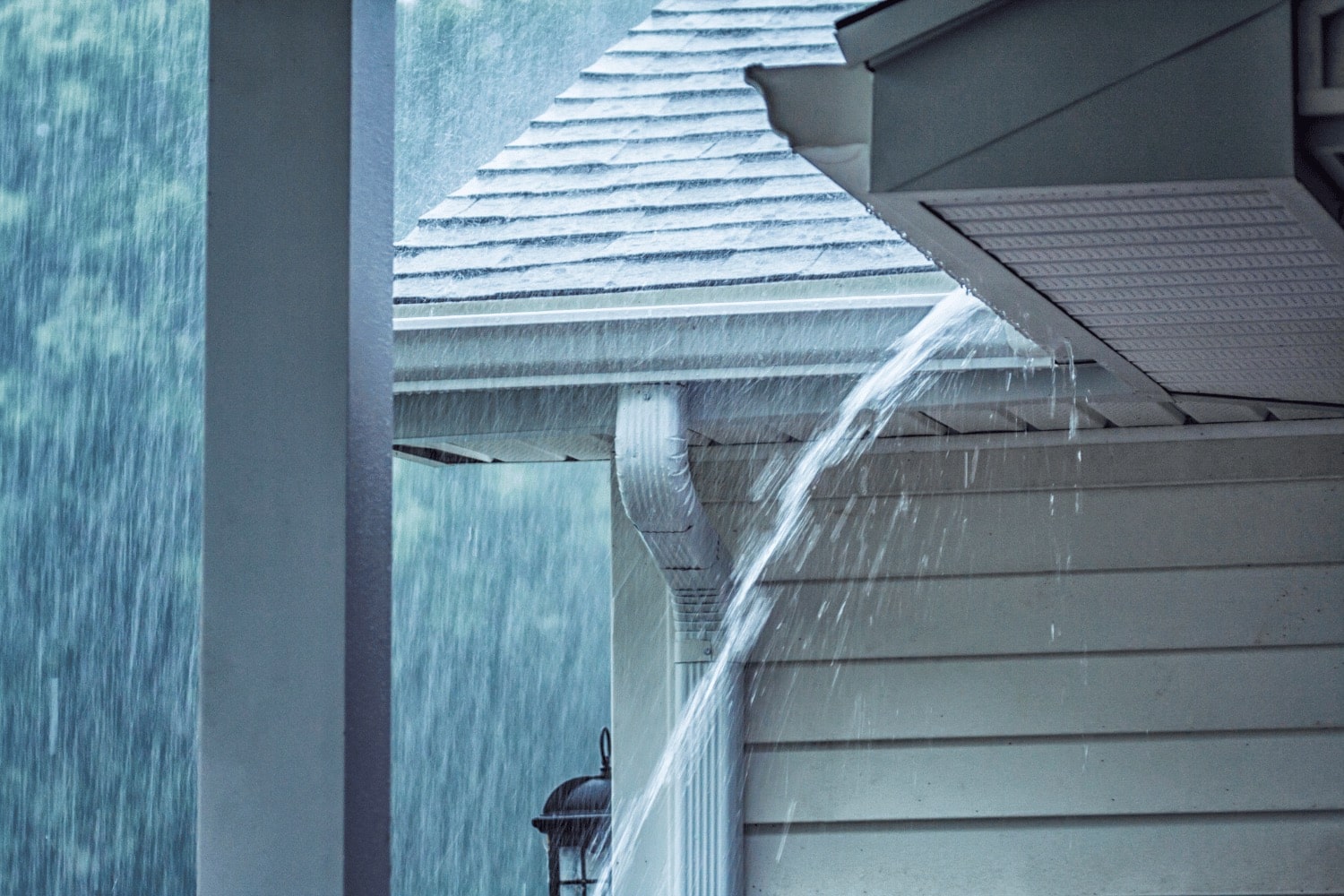
High winds can cause significant roof damage, particularly if the roofing materials are not securely fastened. Signs of wind damage include:
-
Missing shingles
-
Loose granules
-
Cracks
-
Holes
-
Water leakage
These issues can lead to structural damage if not addressed promptly.
Hail Damage
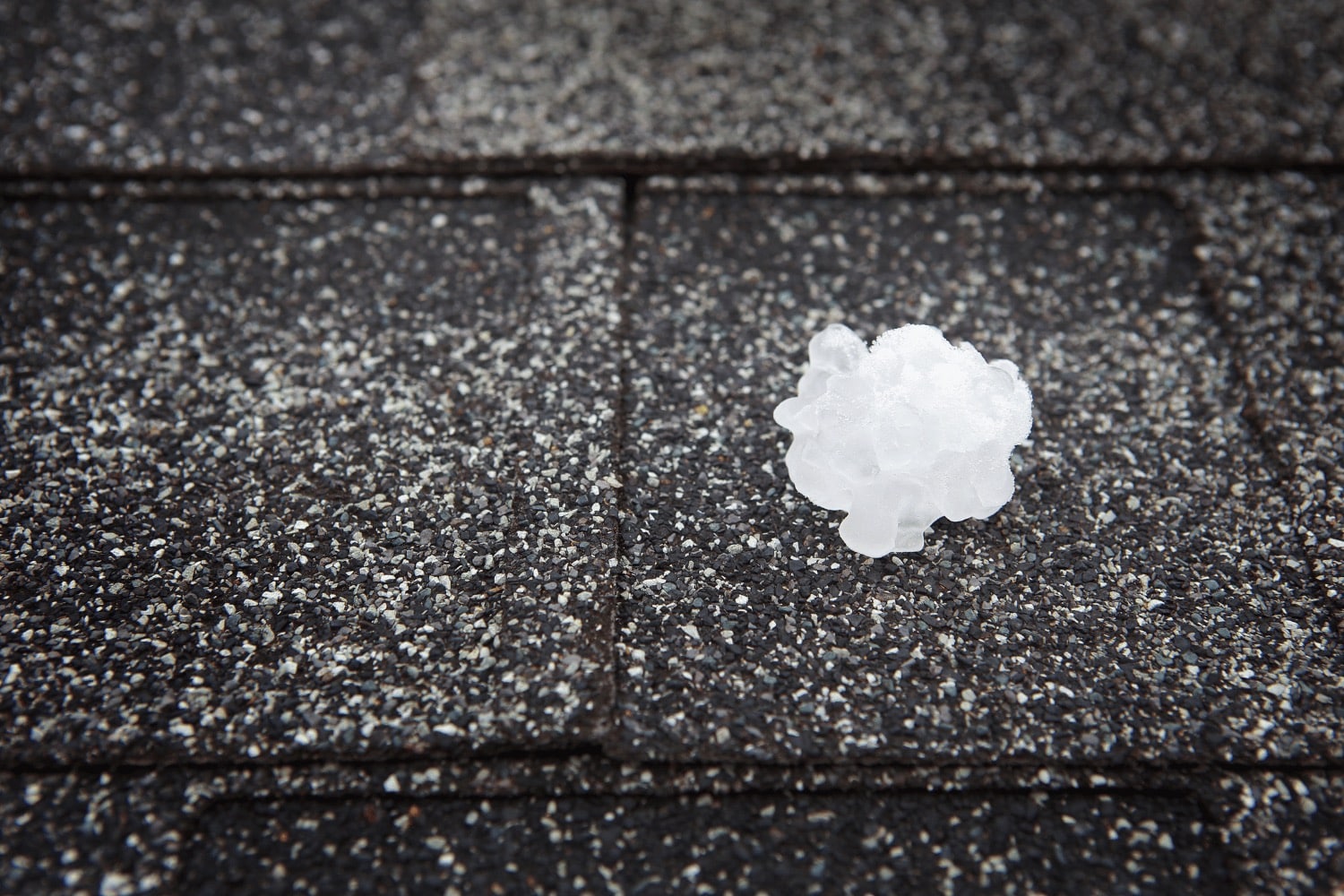
Hailstones can cause various types of damage to a roof, including dents, pockmarks, and loose shingle granules. Significant granule loss can affect the protective layer of the roof, leading to further issues.
Homeowners should look for visible signs of hailstorm damage such as granule loss on roof shingles, dented metal on gutters, downspouts, and even vehicles.
Water Damage from Heavy Rains
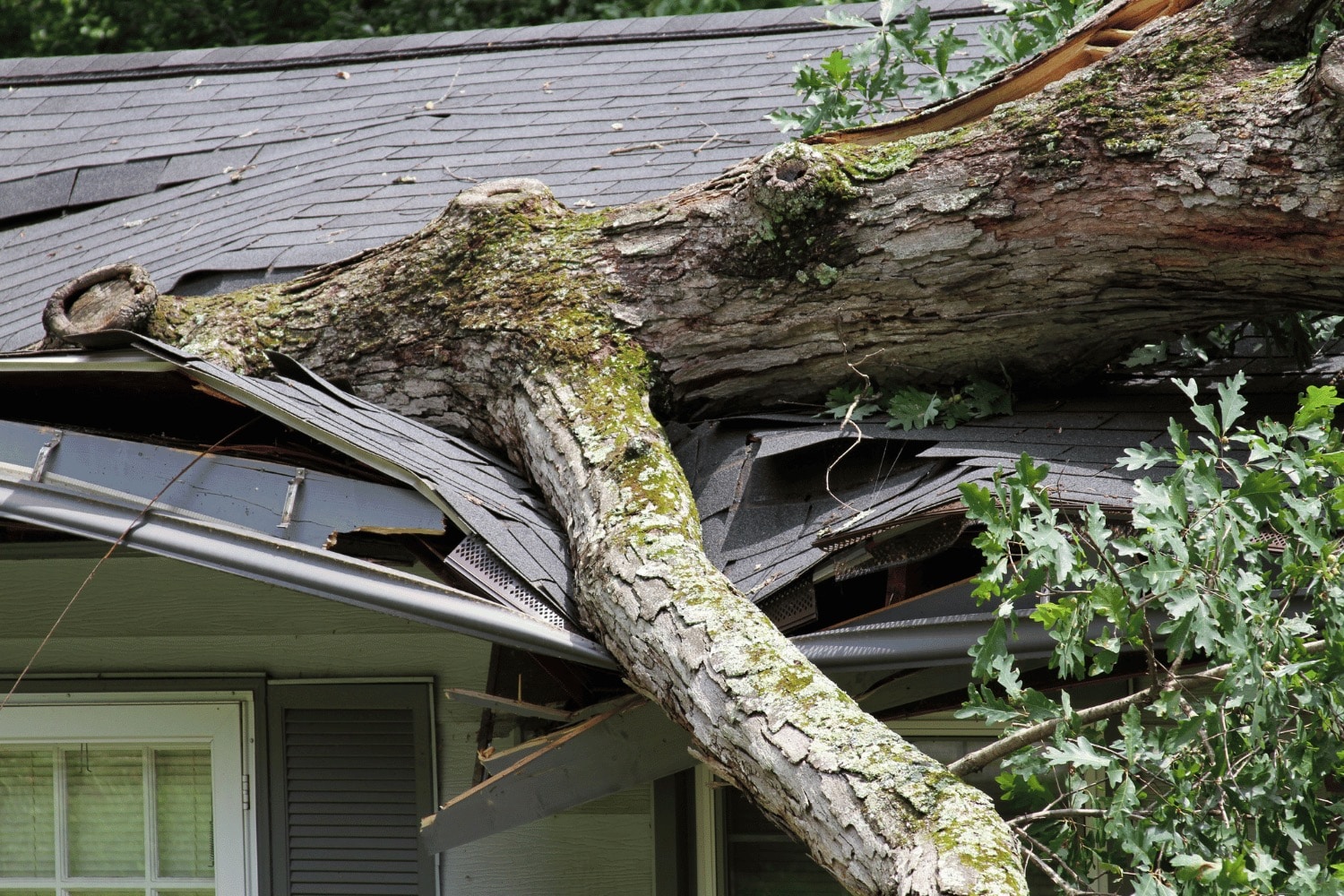
Heavy rainfall can exploit even small vulnerabilities in a roof, leading to leaks and water damage. Water stains on ceilings or walls can indicate roof leaks, and heavy rains can weaken the adhesive between shingles, creating holes in the roof.
Unexplained mold growth in attics or top floors can hint at moisture intrusion from heavy rains. Homeowners should take immediate steps to address a storm damaged roof, including selecting a reliable roofing contractor, understanding the insurance claims process, and being aware of the different types of storm damage that may affect their roof.
Ice and Snow Damage
Accumulation of snow and ice can lead to weight issues and meltwater can exacerbate roof vulnerabilities. Common signs of ice storm damage include leakage and cracks, which can further deteriorate the roof’s condition if not addressed promptly.
Debris Impact
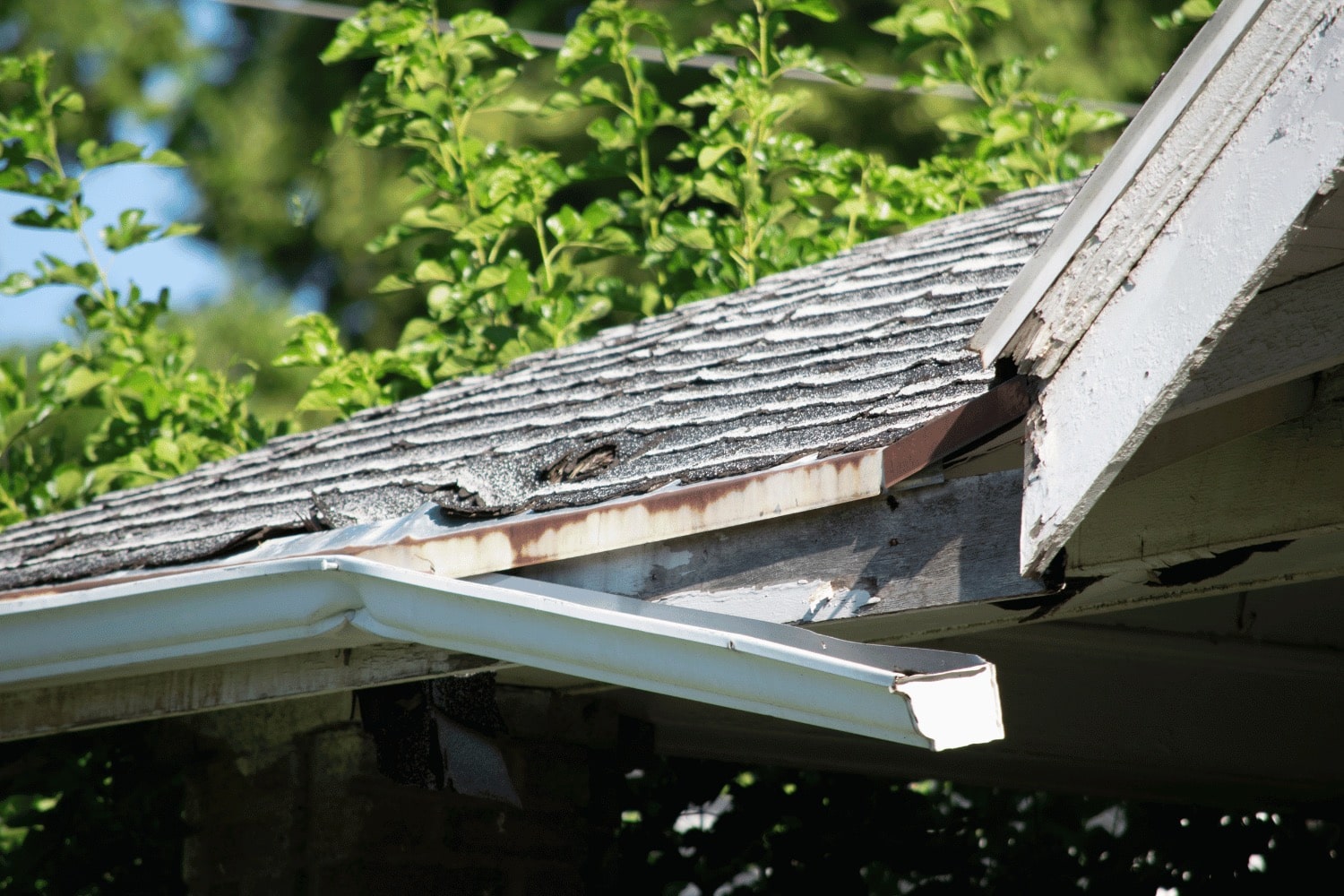
Debris from severe storms can range from small branches to larger tree limbs, causing punctures or dents in the roof materials. High winds can damage flashing, often resulting from debris impact, which can lead to further structural issues if not repaired. That’s why it’s crucial to address storm damage repairs promptly.
Immediate Steps After a Storm
Post-storm, immediate steps must be taken to ensure your safety and prevent further damage to your roof. Prioritize your own safety when spotting roof damage and avoid getting on the roof if it’s unstable. Addressing storm damage roof repair promptly is crucial to prevent roofing materials from deteriorating further and becoming more vulnerable to severe weather conditions.
Safety First
Your safety should always come first. Before inspecting roof damage, ensure that the area is safe. If the roof is unstable, avoid climbing onto it and only perform temporary repairs if it is safe to do so. Remember, your life is more valuable than your roof.
Initial Roof Inspection
Conduct an initial roof inspection by walking around the perimeter of your house and visually assessing the roof for damage. When inspecting for storm damage, be sure to check for signs such as:
-
dented shingles
-
torn shingles
-
missing shingles
These issues could indicate the need for repairs. Use windows to get different viewing angles if you cannot see certain areas from the ground.
Temporary Repairs
Performing temporary repairs can prevent further damage to your roof. Use tarps to cover any breached areas and prevent water intrusion.
It is recommended to cover the damaged area with a tarp and wait to make any permanent repairs until your roof has been inspected by a representative from your insurance company.
Professional Roof Inspection and Repair
Securing the services of a professional roofing contractor for a detailed inspection, expert roof repair, and potential roof replacement is of utmost importance. Professional contractors have the expertise to identify both obvious and hidden damage caused by storms, ensuring thorough repairs.
Finding a Reliable Roofing Contractor
To find a reliable roofing contractor, one must check the following:
-
License: Verify that the contractor has up-to-date licensure.
-
Insurance: Check if the contractor has workers’ compensation and liability insurance to protect against accidents.
-
Warranty: Inquire about the warranty offered by the contractor.
-
Reputation: Read reviews and ask for recommendations from past customers to understand the contractor’s reliability and work quality.
By considering these factors, you can find a reliable roofing contractor.
Detailed Roof Inspection
Schedule a detailed roof inspection with a professional contractor to detect and address minor issues before they become major problems. Inspectors check for cracked caulk, rusted flashing, and damaged shingles during a roof inspection. If you suspect storm damaged roofs after severe weather, it’s crucial to contact an expert for an onsite inspection and check your insurance coverage.
Through regular inspections, minor issues can be detected and remedied before they turn into major problems.
Repair vs. Replacement
Consider the extent of damage and the age of the roof when deciding between repair and a full roof replacement. Investing in a new roof should be considered when the damage is severe or widespread. If the roof has multiple layers of shingles, it may be better to replace it rather than repair it, as additional layers can mask damage and add weight.
Working with Your Insurance Company
The process of navigating insurance claims can pose challenges. Homeowners insurance typically covers roof damage caused by sudden or accidental events like hail, wind, and falling objects.
Documenting Damage
Ensure that you document any visible signs of damage, such as dented, torn, curled, or missing shingles. This will help with your assessment and any potential repairs needed. Take photos or videos of the roof damage to provide to your insurance company when filing a claim.
Make sure to keep a list of notes detailing the damage, and also take pictures to provide to your insurance company for documentation. This will help ensure a smooth claims process.
Filing an Insurance Claim
Involve your homeowners insurance provider and file a claim immediately if you find significant damage to your roof after a storm. Start the claim process by contacting your insurance company and providing details about how and when the damage occurred.
Roofing companies like Rapid Roofing, a reputable roofing company, are experienced in handling insurance claims and can help you streamline the process.
Meeting with the Insurance Adjuster
When meeting with the insurance adjuster, expect them to inspect the roof for storm-related damage and make an assessment. The adjuster will provide a formal report to share with the homeowner and the insurance company.
An adjuster can deny a claim if the roof damage is due to maintenance neglect or issues not covered by the policy.
Preventative Measures for Future Storms
Adopting preventative measures is a strategic way to shield your roof from future storm damage. Regular maintenance, upgrading roofing materials, and ensuring proper drainage systems are key steps.
Regular Maintenance
Regular roof maintenance aids in the identification and resolution of minor issues before they worsen during storms. Routine maintenance includes checking for cracked pipe boots, removing debris, and ensuring vents are functioning properly.
Professional roofers can preserve the manufacturer’s warranty on roofing materials, which might be voided by DIY repairs.
Upgrading Roofing Materials
Upgrading roofing materials to more durable and impact-resistant options, like CertainTeed’s ClimateFlex technology, can provide better protection against storms. Impact-resistant roofing material, such as NorthGate ClimateFlex shingles, offers both aesthetic appeal and superior protection.
Asphalt shingles are a popular choice due to their durability, affordability, and variety of styles and colors.
Proper Drainage Systems
Regular cleaning of gutters and downspouts, as part of maintaining proper drainage systems, helps prevent water accumulation and subsequent damage. Clearing debris from gutters ensures that water flows away from the roof, preventing damage and maintaining structural integrity.
A proper drainage system prevents the creation of holes in the roof and strengthens the roofing deck.
Summary
Understanding the various types of roof storm damage and knowing how to respond can save you from costly repairs and potential structural damage. From wind and hail to heavy rains and debris impact, each type of damage requires specific attention and measures. By prioritizing safety, performing initial inspections, and making temporary repairs, you can mitigate immediate damage.
Additionally, professional roof inspections and repairs are crucial for long-term roof health. Working with reliable roofing contractors ensures thorough assessments and quality repairs, while collaborating with your insurance company can help cover costs. Preventative measures, such as regular maintenance, upgrading roofing materials, and maintaining proper drainage systems, can safeguard your home against future storms.
Frequently Asked Questions
What are the first steps to take after a storm damages my roof?
The first steps after a storm damages your roof are to prioritize safety, perform an initial roof inspection, and make temporary repairs to prevent further damage. These steps will help mitigate the immediate impact of the storm on your property.
How can I find a reliable roofing contractor?
To find a reliable roofing contractor, check for licenses, insurance, warranties, and reviews, ask for references, and ensure the contractor provides a detailed written estimate.
What should I document for my insurance claim?
Make sure to document visible damage with photos, videos, and notes to support your insurance claim. This will help provide evidence of the damage and strengthen your claim.
What are some preventative measures to protect my roof from future storms?
To protect your roof from future storms, it’s essential to invest in regular maintenance, upgrade to impact-resistant materials, and ensure proper drainage systems are in place. These measures can help minimize damage and prolong the life of your roof.
How do I decide between repairing or replacing my roof?
Based on the extent of damage and the age of your roof, you can decide between repairing or replacing it. Severe or widespread damage, as well as multiple layers of shingles, may indicate the need for a full replacement.

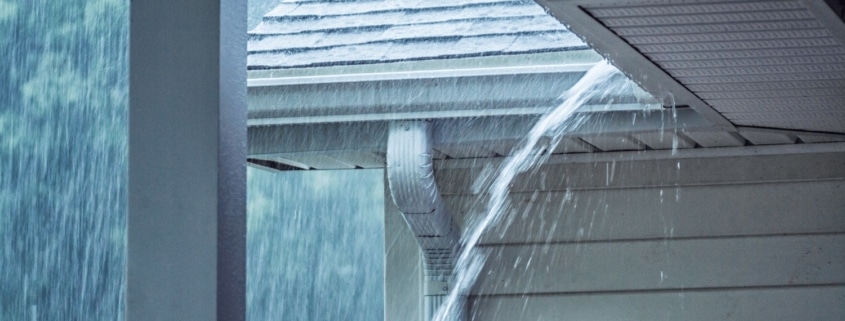
 Residential Roofing
Residential Roofing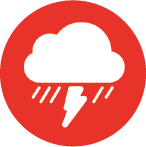 Storm Damage
Storm Damage Multi-Family Homes
Multi-Family Homes
